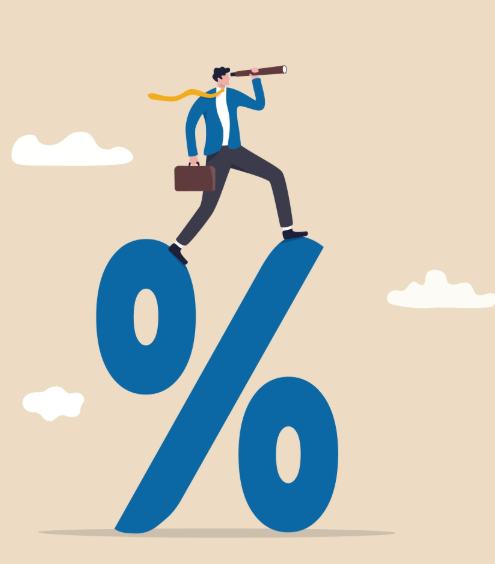How the Bank of Canada’s Interest Rate Affects Investors

Whenever the Bank of Canada adjusts its interest rate, it triggers significant shifts across the financial markets. But how exactly do these rate changes impact investors? This article breaks down the effects of the Bank of Canada’s interest rate adjustments and helps you make informed decisions about your investments.
What Are Interest Rates and How Do They Work?
Interest rates represent the cost of borrowing money or the return you earn on your savings, typically expressed as a percentage of the principal amount over a given period. For instance, if you take out a $1,000 loan at a 6% interest rate, you would pay $60 in interest over the course of a year.
Interest rates are a critical factor in economic activity, influencing everything from consumer loans to business financing. The Bank of Canada uses the policy rate to help keep inflation stable, which in turn guides other financial institutions in setting their rates.
Key Interest Rates You Should Know
There are two main interest rates that affect investors:
- Policy Rate: Set by the Bank of Canada, this rate helps control inflation and directly influences other interest rates in the economy. The policy rate is the primary tool the BoC uses to manage economic growth and inflation.
- Prime Rate: This rate is determined by individual financial institutions and is what they charge for loans like mortgages, lines of credit, and personal loans. The prime rate is often influenced by the Bank of Canada’s policy rate.
Additionally, interest rates can be either fixed or variable. Fixed rates remain constant throughout the loan term, while variable rates can change based on adjustments to the prime rate.
How the Bank of Canada’s Interest Rates Work
The Bank of Canada sets the policy interest rate (also called the overnight target rate) to influence borrowing costs for financial institutions. When the BoC changes this rate, it affects the overall cost of borrowing across the economy, which can either stimulate or slow down economic growth.
- Higher Interest Rates: When the Bank of Canada raises interest rates, borrowing becomes more expensive. This tends to slow down consumer spending and business investments, as higher borrowing costs lead people and businesses to save more and spend less.
- Lower Interest Rates: A rate cut makes borrowing cheaper, encouraging consumers and businesses to spend more. This increase in demand can spur economic growth.
The Impact of Interest Rates on Investments
The changes in interest rates can have varying effects on different types of investments. Here’s how lower rates may influence popular investment choices:
Interest Rates and Savings Accounts
When the BoC lowers interest rates, products like Guaranteed Investment Certificates (GICs) and high-interest savings accounts (HISAs) typically offer lower returns. Since these accounts are sensitive to rate changes, a drop in the policy rate will decrease the yields on these financial products, making them less attractive to investors seeking income.
Interest Rates and Bonds
Bonds generally have an inverse relationship with interest rates. When rates fall, the prices of existing bonds tend to rise because their fixed interest payments become more attractive compared to newly issued bonds with lower rates.
For example, if you own a bond paying 6% interest and rates drop, new bonds might only offer 5%, making your 6% bond more desirable. As a result, the market price of your bond could increase, potentially allowing you to sell it for a profit.
However, this relationship is not always straightforward. During periods of economic instability, investors may flock to bonds as a safer asset, which can drive bond prices up even if interest rates rise.
Interest Rates and Stocks
The impact of interest rates on stocks is complex. Lower interest rates can encourage businesses to borrow more for expansion, boosting productivity and potentially increasing earnings. This can lead to higher stock prices, particularly in sectors like consumer goods, technology, and real estate, where lower borrowing costs enhance growth prospects.
On the other hand, lower rates can compress profit margins for financial institutions that rely on lending, such as banks, since their interest income may decrease.
Interest Rates and Real Estate
The real estate market is highly sensitive to interest rate changes. When interest rates fall, mortgages become cheaper, making homeownership more affordable and stimulating demand in the housing market. As demand increases, property values tend to rise, benefiting real estate investors.
Additionally, existing property owners can refinance their mortgages at lower rates, freeing up capital for further investment opportunities.
When Might the Bank of Canada Cut Rates Again?
Predicting the timing of future rate cuts depends on economic conditions such as inflation, employment figures, and overall economic growth. The Bank of Canada regularly releases statements and updates to give the public insight into its decision-making process.
As BoC Governor Tiff Macklem mentioned, if inflation continues to decrease as projected, it is likely that further rate cuts will occur. Investors closely monitor these indicators to anticipate how rate changes might impact their portfolios.
Conclusion
The Bank of Canada’s interest rate decisions have far-reaching effects on various asset classes, from savings accounts to stocks and real estate. Understanding how interest rates influence your investments is crucial for making informed financial decisions. Whether rates are rising or falling, these changes can create opportunities or challenges for investors. Staying informed and adjusting your strategy accordingly will help you navigate the financial landscape and make the most of your investments.


 English
English 












































































































































































































































































































































































